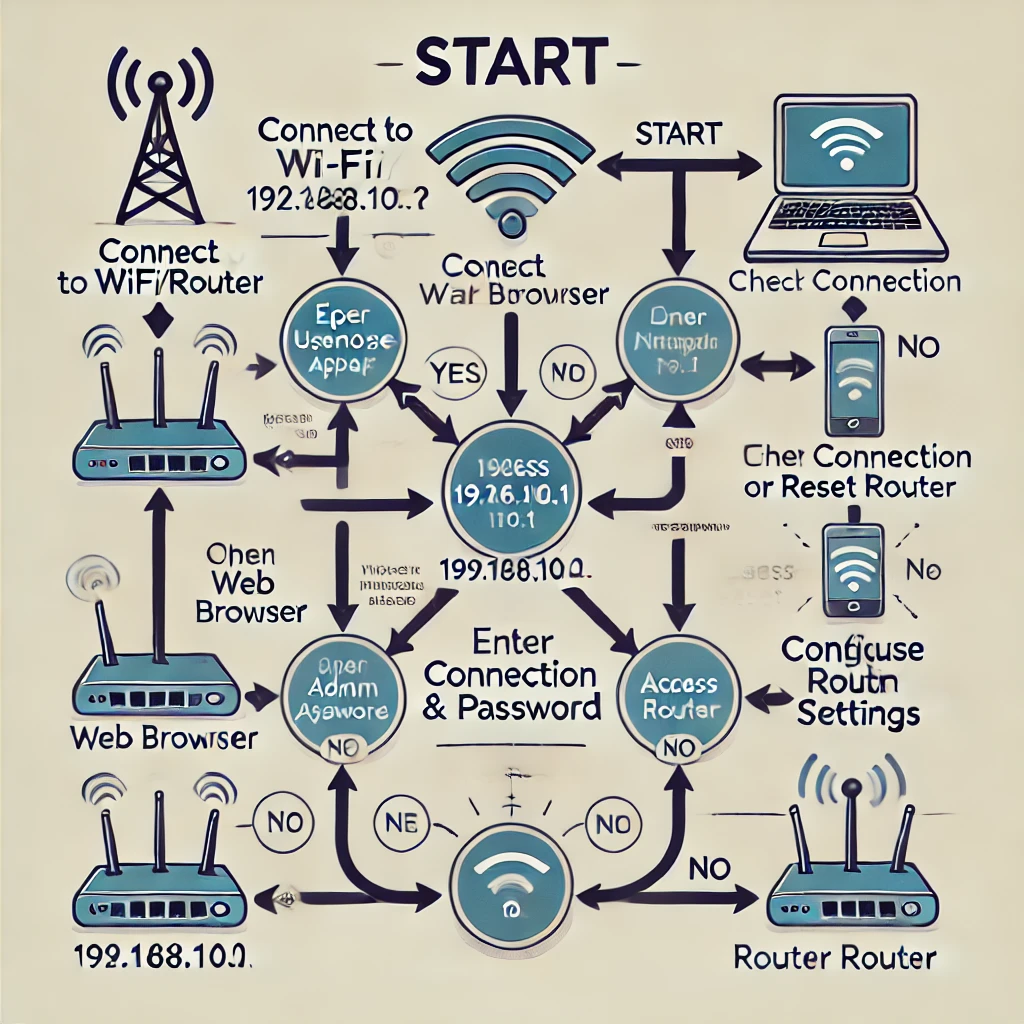What is 192.168.100.1?
192.168.100.1: Login, admin panel The IP address serves as a private gateway IP commonly used by routers and modems as an access point for local network configuration. By entering this IP address in a browser’s address bar, users can access the device’s administrative interface. This interface provides control over settings, network management, and security configurations that enhance the overall functionality and security of the network.
Accessing the 192.168.100.1 Login Page
- Open Your Browser: Ensure you are connected to the same network as the router.
- Enter the IP Address: Type
https://192.168.100.1in your browser’s address bar. - Input Credentials: You will be prompted to enter the username and password associated with the device. Default login credentials often include:
- Username: admin
- Password: admin or password
Common Default Credentials for 192.168.100.1
Each router manufacturer may have specific default credentials. Here are some of the widely used ones:
| Manufacturer | Default Username | Default Password |
|---|---|---|
| TP-Link | admin | admin |
| Netgear | admin | password |
| Motorola | admin | motorola |
| Cisco | cisco | cisco |
Note: It is recommended to change default credentials upon initial setup to secure your network from unauthorized access.
Configuring Router Settings via 192.168.100.1
The 192.168.100.1 admin interface allows you to configure a variety of settings, from basic network details to advanced security options. Here is a breakdown of the key configuration options:
1. Network Settings
- Wi-Fi Network Name (SSID): Customize the name of your network.
- Password Protection: Set or change your Wi-Fi password for secure access.
- Network Modes: Choose between different wireless modes (e.g., 802.11b/g/n).
- Channel Selection: Adjust channels to minimize interference from nearby networks.
2. Security Configurations
- WPA/WPA2 Encryption: Enable WPA/WPA2 for secure data transmission.
- Firewall Settings: Turn the firewall on/off or customize rules to filter unwanted traffic.
- MAC Filtering: Restrict access to specific devices based on their MAC addresses.
3. Advanced Features
- QoS (Quality of Service): Prioritize bandwidth for critical devices or applications.
- Port Forwarding: Configure ports for gaming consoles, security cameras, or other devices that need remote access.
- Parental Controls: Restrict or monitor internet usage for specific devices on the network.
4. Device Management
- Device List: View a list of all devices connected to your network.
- IP Reservation: Assign static IP addresses to certain devices for stable connectivity.
- Bandwidth Monitoring: Track data usage to manage network load effectively.
Troubleshooting Common Issues with 192.168.100.1
Below are solutions to some common issues encountered when accessing or using 192.168.100.1.
Can’t Access 192.168.100.1?
- Network Connection Issues: Verify that your device is connected to the router’s network.
- Incorrect IP Address: Confirm that the correct IP is 192.168.100.1 and not a different private IP, such as 192.168.1.1.
- Clearing Browser Cache: Cached data may interfere with access; clear the cache and try again.
- Reset the Router: If you’ve lost login credentials, perform a factory reset on the device (usually by pressing a reset button on the router for 10-15 seconds).
Forgot Login Credentials?
- Check the Manual: The user manual usually lists default credentials.
- Factory Reset: Performing a factory reset will restore default settings, including username and password.
Diagram: Router Access Flow
Here is a visual representation of accessing and configuring the router at 192.168.100.1.

Tips for Securing Your 192.168.100.1 Admin Interface
- Change Default Credentials: Always update the username and password to something unique.
- Enable Network Encryption: Use WPA3 if available for the highest security.
- Disable Remote Management: This limits access to the local network only, preventing unauthorized external access.
- Regular Firmware Updates: Ensure the router firmware is up-to-date to benefit from security patches and performance enhancements.
Conclusion
Managing the 192.168.100.1 IP address is crucial for maintaining a secure and optimized home or office network. With secure login credentials and an understanding of the configuration options, users can easily monitor and adjust settings to ensure reliable network performance and enhanced security.